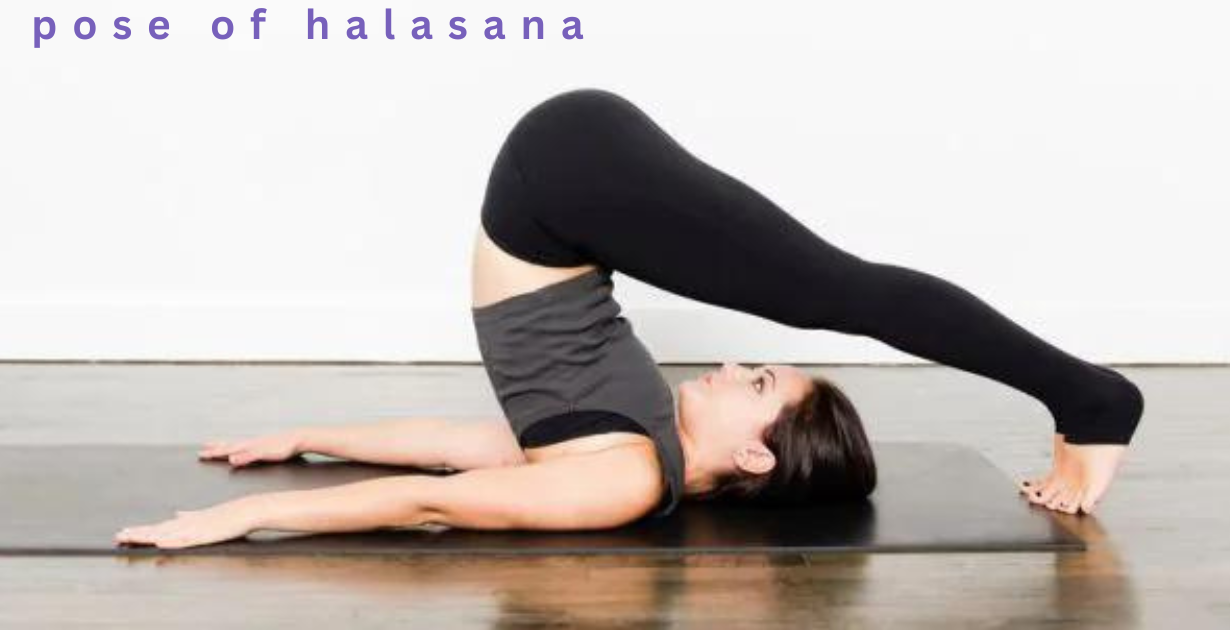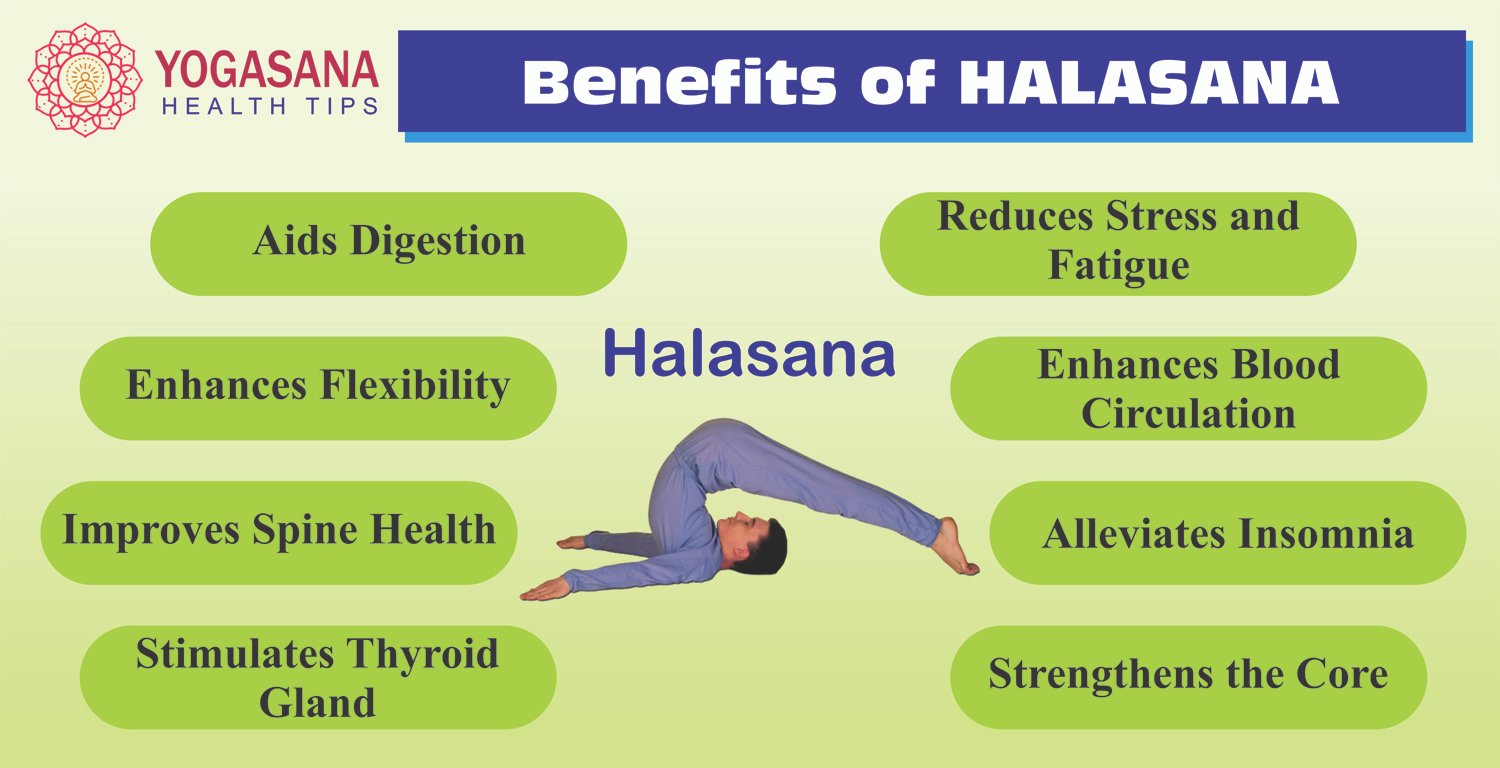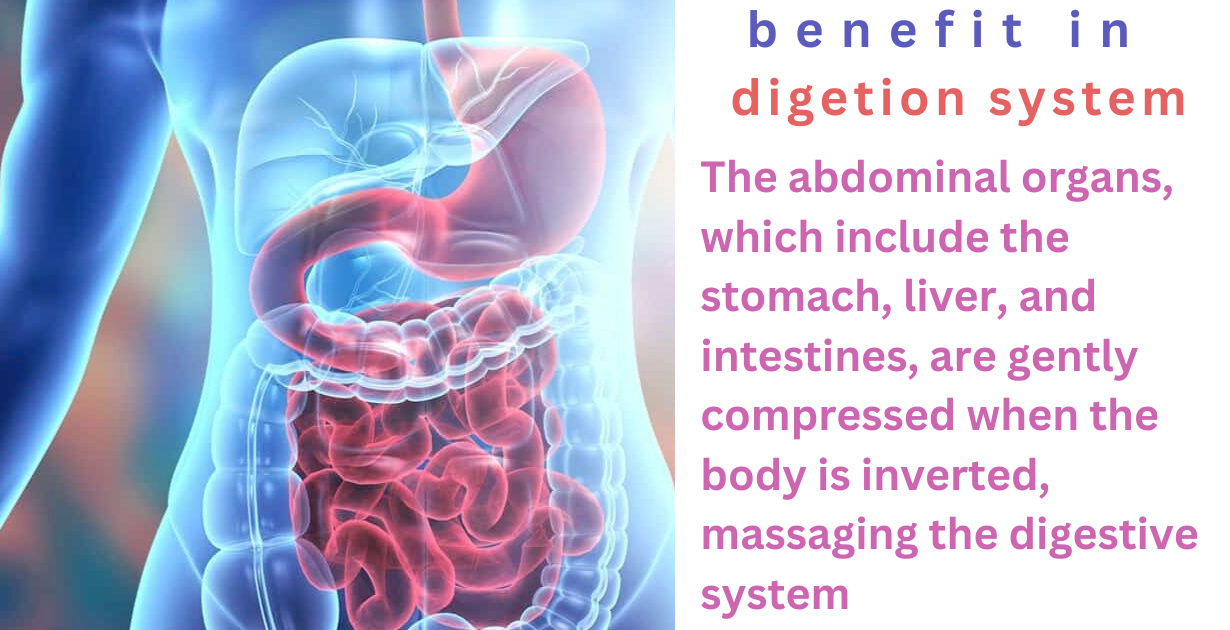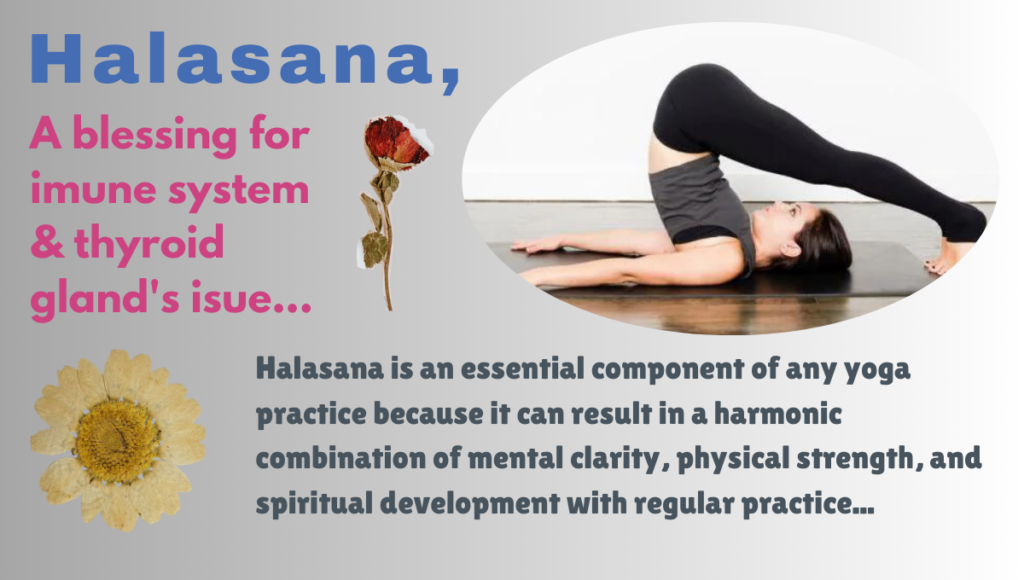Halasana’s Benefits__
What is Halasana(Plow Pose) ?
- The reviving yoga pose known as halasana, or the “Plow Pose,” has several advantages for the body, mind, and soul.
- The traditional yoga pose known as Halasana, or the Plow Pose, is an inverted position in which the legs are stretched over the head like a plow.
- Originating from the Sanskrit terms “Hala,” which means plow, and “Asana,” which means stance, Halasana is a well-known healing and restorative posture.
- Since this posture involves a deep stretch, it is typically performed in the last minutes of a yoga practice. This is because the body must be fully warmed up for the pose.
- The “Halasana’s Benefits” are manifold, encompassing enhanced relaxation, increased flexibility, and better digestion.

- Assisting with digestion and treating constipation, one of the main “Halasana’s Benefits” is its capacity to activate and tone the abdominal organs.
- The position facilitates effective digestion and cleansing by squeezing the stomach and massaging the inside organs. The posture also extends the shoulders and spine, increasing their flexibility and releasing tension in those areas.
- The “Halasana’s Benefits” are numerous and encompass mental and physical well-being. In terms of physical alignment, this pose stretches the hamstrings, shoulders, and spine, improving flexibility and easing tension or pain in the back brought on by extended sitting or bad posture.
- Moreover, the relaxing effects of Halasana on the nervous system are well established. The body’s inverted position promotes blood flow to the brain, which lessens worry, weariness, and stress. Frequent practice is a great complement to any wellness regimen since it can help with mental clarity and emotional stability.
- All things considered, the “Halasana’s Benefits” go well beyond the material realm and promote harmony and peace of mind and body.
Halasana : A blessing for imune system__
- Among the less well-known “Halasana’s Benefits” is its immune-system-boosting properties. In order to boost immune system function and eliminate toxins from the body, the position promotes lymphatic drainage.

- Frequent practice promotes overall health and well-being by aiding in the body’s detoxification.
- Overall, the “Halasana’s Benefits” extend far beyond the physical, promoting a holistic sense of wellness that encompasses the body, mind, and spirit.
For whom is Halasana practice necessary ?
- A must-do yoga pose for anyone hoping to increase shoulder, neck, and spine flexibility is halasana. People with stiff backs, tense necks, or bad posture would especially benefit from this pose.
- It is an essential exercise for people who lead sedentary lives or who frequently suffer from back pain because it also helps to stretch and strengthen the muscles along the spine.
- Another major “Halasana’s Benefits” is its ability to calm the nervous system, making it ideal for individuals dealing with stress, anxiety, or insomnia. Additionally, it stimulates the thyroid and digestive system, which can aid in better digestion and metabolism.
- To sum up, if you want to support the body’s overall metabolic processes, reduce stress, and enhance spinal health, you need to practice halasana.
A special advantege of Halasana__
- The “Halasana’s Benefits”, or the Plow Pose, go beyond basic physical improvements. This unusual yoga pose stimulates the thyroid gland, balances hormones, and increases metabolism to improve general vigor.

- Additionally, by massaging internal organs, improving digestion, and easing constipation, it aids in detoxification.
- Furthermore, by increasing blood flow to the brain, halasana helps to relax the nervous system and lessens weariness, stress, and worry.
- By expanding the chest, the position also strengthens the lungs and increases circulation. Regular practice of Halasana can lead to increased levels of relaxation, mental clarity, and general wellbeing.
How to Perform halasana__
- Practicing Halasana (Plow Pose) can bring a range of advantages, from strengthening flexibility to fostering calm.
- To get the most out of the “Halasana’s Benefits” and prevent injury, it is crucial that you do this position correctly. Follow these step-by-step instructions to practice Halasana safely and effectively:
- First, make preparations: Start by placing your arms beside your body, palms down, while lying flat on your back on a yoga mat. Make sure your body is relaxed and your breathing is steady and calm.
- Raise Your Legs: Inhale slowly, raising both legs off the ground while maintaining their straightness and unity. Your legs may be raised with the assistance of your abdominal muscles. Raise your legs to a 90-degree angle, with your feet pointing towards the ceiling.
- Support Your Back: When you release your breath, gently press your hands into the floor to support your lower back and raise your hips off the floor. Your legs should be straight and your knees should not bend as you bring your toes toward the floor.
- Adjust Your Position: When your toes touch the floor, interlock your fingers and extend your arms along the mat, pressing your shoulders firmly into the ground. Your back should form a gentle arch and your neck should stay relaxed. Your spine should be protected by not turning your head to either side.
- Hold the Pose: Hold this posture for 15 to 30 seconds while taking steady, deep breaths. Pay attention to the stretches in your legs, shoulders, and back. The “Halasana’s Benefits”, which include better digestion, decreased stress, and increased flexibility, are heightened when the practitioner remains calm and relaxed throughout the pose.
- Release the Pose: Carefully bring your hands back to support your lower back as you come out of Halasana. Breathe in and then slowly lower your spine, vertebra by vertebra, onto the carpet. As you return your legs to the beginning position, maintain their straightness.
- Regular practice of Halasana can yield several benefits, such as increased circulation, less back discomfort, boosted metabolism, and a relaxing impact on the body and mind.
Some Precautions about Practicing Halasana__
- Despite the many “Halasana’s Benefits”, it’s crucial to perform this position carefully to prevent injury and optimize its benefits. Consider the following important safety measures:
- Neck and Spine Health:Because halasana requires extensive stretching of the neck and spine, practitioners with cervical spondylitis, neck pain, or spinal injuries should either avoid this posture altogether or perform it under the guidance of a qualified teacher. To avoid strain, make sure your neck stays neutral and don’t turn your head to either side.
- Pregnancy and Menstruation : Halasana practitioners should refrain from performing the inversion and abdominal compression since they may not be good for a pregnant or menstrual woman. For alternatives, it is advisable to speak with a licensed yoga instructor or a healthcare provider.
- Heart and Blood Pressure Issues: Because Halasana is an inverted pose that increases pressure in the head and chest, those with high blood pressure, heart problems, or glaucoma should not practice this pose.
- Gradual Progression: In order to properly prepare for Halasana, beginners should approach the pose gradually. The greatest way to reap the “Halasana’s Benefits” is to practice safely and effectively, which requires patience, mindfulness, and appropriate technique.
Another Most Important Halasana’s Benefits__
- The Plow Pose, also known as Halasana, is a strong and adaptable yoga posture that has numerous advantages for the body and mind. The following five “Halasana’s Benefits” are the main reasons it’s a must-have pose for any yoga practice:

Enhances Strength and Flexibility of the Spine
- Enhancing spinal flexibility is one of the main “Halasana’s Benefits”. This posture eases stiffness and stress, especially in the lower back, by deeply stretching the muscles along the neck, shoulders, and back.
- It improves posture overall and prevents back discomfort by strengthening the muscles in the spine. Halasana practice on a regular basis can assist maintain a flexible and healthy spine, which lowers the chance of injury.
Improves Digestive Health:

- Halasana stimulates the digestive tract very well. The abdominal organs, which include the stomach, liver, and intestines, are gently compressed when the body is inverted, massaging the digestive system.
- This action facilitates detoxification, eases constipation, and enhances digestion.
- The thyroid gland, which is essential for controlling metabolism and improving digestion and weight management, is also stimulated by this position.
Reduces Stress and Anxiety
- Another significant “Halasana’s Benefits” is its calming effect on the mind. By increasing blood flow to the brain, the inversion relieves tension, calms the nervous system, and eases anxiety.
- The parasympathetic nervous system, which is stimulated by halasana, encourages calmness and relaxation.
Enhances Respiratory and Circulation:
- Halasana enhances blood circulation all over the body. This posture promotes general vigor and energy by helping to oxygenate the cells and tissues by reversing the flow of blood.
- By expanding the chest and lungs, it also promotes deeper breathing, which helps strengthen the lungs and improve respiratory health.
Conclusion:
In summary, the Plow Pose, also known as Halasana, has several advantages that go beyond health. This posture enhances general health and energy by strengthening the spine, boosting detoxification, and improving digestion. Because of its relaxing effects on the nerve system, other “Halasana’s Benefits” include reduced tension and anxiety as well as improved mental clarity. The posture also strengthens the immune system, respiratory system, and circulation, all of which support a more balanced and comprehensive state of wellbeing. Halasana is an essential component of any yoga practice because it can result in a harmonic combination of mental clarity, physical strength, and spiritual development with regular practice.
FAQ:
- Which “Halasana’s Benefits” are they ?
- Halasana contributes to the spine’s youthfulness and flexibility. There are numerous health advantages to doing the halasana for your hamstrings, spine, and strained muscles. Additionally, it can aid with diabetes, high blood pressure, constipation, etc.
- Which illnesses can Halasana treat ?
Halasana practice on a regular basis treats a variety of ailments, including blood diseases, asthma, coughing, underdevelopment of the thyroid, bodily disorders, and premature aging. The headache passes. - How much time should be spent on Halasana ?
Halasana is one of the many yoga poses that offers numerous health advantages. A daily ten-minute practice of Halasana brightens the face. - Is Halasana a height-enhancing pose ?
Indeed, Halasana heightens, but it might be challenging to perform. In this case, doing so results in a drop in body fat and an increase in height. - When should one stop performing Halasana ?
You cannot perform Halasana if you have recently eaten, have severe injuries in any region of your body, or are experiencing pain in your shoulders, back, or stomach. - After Halasana, which pose is performed ?
One practices Bhujangasana after performing Halasana. - Halasana pose: what is it ?
The traditional yoga stance known as halasana (asana in Sanskrit) is used in many different styles of yoga practices. It is laying on your back with your feet behind your head on the ground. Halasana is usually performed at the conclusion of a yoga practice.

